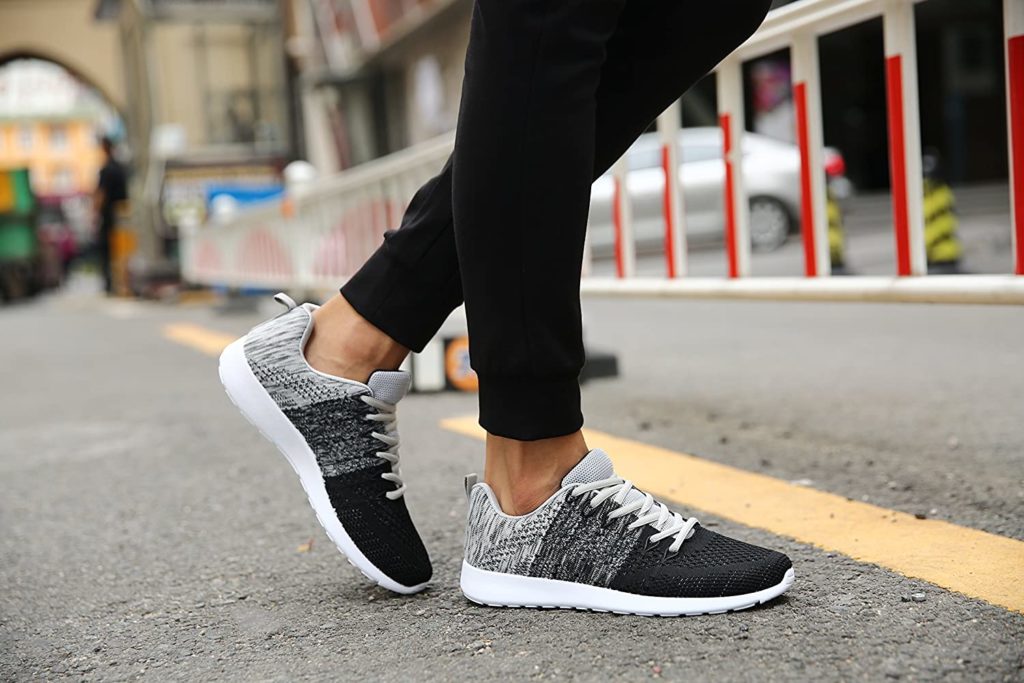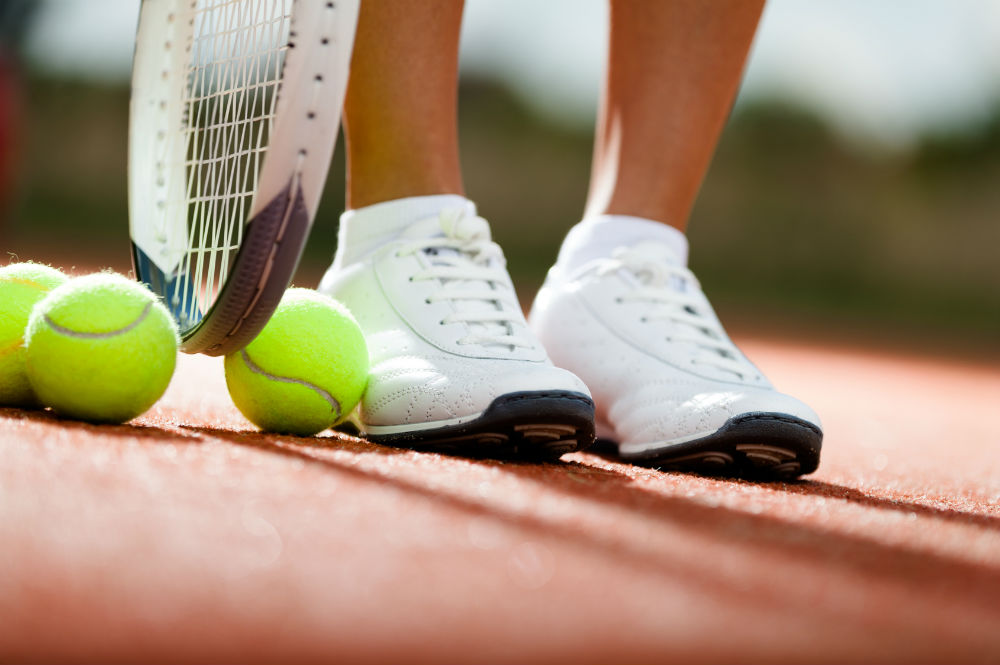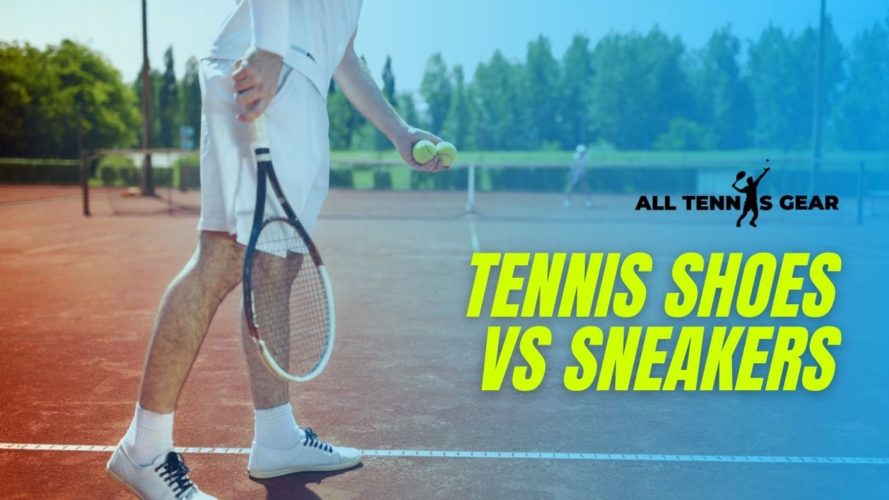Tennis shoes are not sneakers. Sneakers are not tennis shoes.
This can be confusing, especially if you’re a newbie to the world of athletic footwear. So what’s the difference between tennis shoes vs sneakers? And how do they differ from each other?
In order to understand this better, we need to define some terms first.
A sneaker is generally defined as a shoe with a low-cut front and an ankle strap or buckle that was designed for sports such as basketball, baseball, soccer, etc.
On the other hand, tennis shoes are usually characterized by their high-cut uppers (above the ankle) and non-marking soles.
These were originally made for playing on hard courts like concrete or asphalt surfaces in both indoor & outdoor games such as badminton, squash, or racquetball among others.
However today many people wear them casually too because they look great.
If you’re not sure, or if you just want to learn more about the differences between tennis shoes vs sneakers, then keep reading!
Introduction to Sneakers

Historically, sneakers were introduced to the market first, and tennis shoes are a branch of the sneaker category.
Sneakers encompass a much wider variety of shoes than tennis shoes that are more of a sport-specific category. The majority of people use sneakers for athletic activities, slowly turning sneakers into a synonym for sports shoes.
In general terms, sneakers are footwear with a flexible sole that is made of synthetic material such as rubber with the upper bit made of cloth or synthetic alternatives.
To put the defining sentence tennis shoes vs sneakers, all tennis shoes can be called sneakers, but not all sneakers can be termed as tennis shoes.
Sneakers were first brought to the world by a US Rubber company in 1892, immediately sparking interest amongst society. As these shoes feature rubber soles, they were extremely comfortable while playing sports.
If you ever wondered why they were named sneakers, it’s because the shoes were exceptionally quiet on most surfaces, making it surprisingly easy to “sneak” around.
Before sneakers, there were Keds introduced by Goodyear in the 1880s. During the ‘50s, the sneaker industry saw a spike in popularity amongst teenagers and rebels, not to mention the athletes who used them during playing football and basketball.
Years went by and sneakers continued growing in popularity, quickly becoming a sports staple and a practical fashion statement.
Introduction to Tennis Shoes

Tennis shoes have existed since the mid to late 1800s when they were still called Plimsolls. These rubber and canvas shoes were worn while walking, bicycling, playing tennis, playing croquet, and much more.
As they felt lightweight and flexible, they quickly became a luxury item in games and athletics. With the evolution of athletics, there have been many variations of tennis shoes.
Adidas launched their first tennis shoe as well as their first Converse in 1931, releasing the Jack Purcell tennis shoe shortly after. Ever since then, tennis shoes are the quintessential footwear for the game of tennis.
Athletes benefit most from shoes with hard soles that are resistant to wear and tear. Tennis shoes are constructed of polyurethane material which is known to be highly flexible and capable of bracing the impact when feet make contact with obstacles or roads.
Tennis Shoes vs Sneakers: Important Differences
The main difference between tennis shoes and sneakers is that tennis shoes are designed for playing tennis while sneakers are more focused on style and customization. Both of them are athletic footwear, but if you want to play tennis, you should choose proper tennis shoes whereas sneakers would be a good choice for everyday usage.
There are quite a few differences between a tennis shoe and a sneaker. They are both descendants of the same family of design in shoes, but the variations have gotten more noticeable with time.
So, for today’s discussion on tennis shoes vs sneakers, we will be going to lengths about the basic factors that give tennis shoes a separate identity. It’s time to stop terming everything as sneakers!
1. Suitability
Sneakers are as much for style as they are for particular athletic purposes. There is an almost endless array of options to choose from in sporting goods stores – both online and brick-and-mortar. Some are for running, some for basketball, and much more soccer, skateboarding, volleyball, and so on.
You can also pop into various online websites and customize your very own pair of sneakers, choosing from a bunch of color and pattern options as well as upper, laces, stitching, and sole. They weren’t made for specifically a type of sport, but they are athletic shoes.
Sneakers are more comfortable in comparison to tennis shoes. They also lack some of the technical aspects you can get with tennis shoes, like non-scuffing soles, lateral support, or shock-absorbing material.
All in all, sneakers are everyday, fashionable shoes made for the average person in jeans.
In contrast, tennis shoes were made for playing tennis – just as the name suggests. They feature particular technical specifications in the type of support offered, weight, the flexibility of soles, breathability, and so on.
They are developed to improve the player’s performance on the court, giving them an edge in efficient movement, clean direction change, and more. Even the soles are designed to serve a specific purpose – the best traction on clay, hard, or grass courts.
Tennis shoes are created to accommodate quick starts and stops alongside jerky lateral movements across flat surfaces, like a tennis court. The stable and flat bottom of a tennis shoe protects players from rolling an ankle during making quick, sharp lateral movements.
Traditionally, white soles are constructed from rubber so that they won’t leave skid marks on the surface of the court while the uppers are made from either nylon or leather.
A grass or clay court is considerably more forgiving, so longevity isn’t that essential. The pattern on the said sole is created for a particular court surface.
Herringbone is one of the most common patterns and suitable for hard surfaces but a nabbed or dimpled sole is a better choice for grass surfaces as they tend to be slippery.
Players who practice/compete on hard surfaces should wear shoes providing ample shock absorption and cushion.
2. Availability
Sneakers are usually easier to find compared to their more technical counterparts. You can get them at virtually any shoe store.
A dedicated tennis gear store is definitely the best place to find high-quality tennis shoes as they select shoes fitting a wide range of tennis players’ needs.
Sneakers or tennis shoes can also be purchased online, but make sure the store offers a return policy so that there’s no problem if the fit isn’t right (or you don’t like the design or style).
Or you can simply find the best tennis shoes on Amazon and get them delivered within hours if you’re a Prime member.
3. Cost
The price of tennis shoes or shoes depends on the inclusion of “innovative” technology during the making process of the shoe, the model, and the brand.
Cheap sneakers will come with lower quality rubber soles, almost nonexistent air in the soles, and lesser intricate stitching (even if the stitching is there, the quality won’t be as impressive).
Mid-range sneakers that often advertise unique comfort addition or technology fall in the costlier section of the price table.
As tennis shoes need to fit into certain court qualifications to be considered acceptable for games, the budget is generally higher than that of sneakers.
At the very end of the spectrum (the high-end side), sneakers and tennis shoes are advertised as limited models or specialty.
4. Durability
As tennis shoes go through a fair share of wear and tear on a regular basis, they are designed to be rather durable.
High-quality sneakers can be significantly durable due to their top-notch construction too. But as a general statement, it can be said that tennis shoes are more durable than sneakers.
It might change depending on the frequency and location of use.
Do You Say Sneakers or Tennis Shoes?
These rubber-soled shoes have gained various names in various parts of the world. Americans usually call them tennis shoes or sneakers while the British use the term “joggers.”
Interestingly, not many people were aware that there is a sharp line of regionalism on the map of the USA when the average public is asked what they call these shoes – tennis shoes vs sneakers?
In a study conducted by Harvard University in 2017, 45.5% of people call them “sneakers” – mostly north-easterners. On the other hand, 41.3% of wearers call them “tennis shoes.”
In Cincinnati and Chicago, they got the name “gym shoes” while Hawaiians keep it simple with “shoes.”
Finishing Thoughts
Although every athletic shoe draws its origin from the same place, developments have been made over the years to be particularly and technically crafted to suit the needs of sports players, like tennis.
Without a doubt, you can use sneakers to play tennis, but you won’t receive the same traction, support, or comfort that you’d like to have when playing on the courts.
There is no definitive winner in the tennis shoes vs sneakers debate.

My name is Reagen and I started AllTennisGear (earlier AllTennisShoes) as a way to share my humble experience and help new Tennis players. Thank you for spending a few minutes of your day here and know that your feedback is always welcome.

TL;DR
– Herringbone is one of the most common patterns and suitable for hard surfaces
-The stable and flat bottom of a tennis shoe protects players from rolling an ankle during making quick, sharp lateral movements.